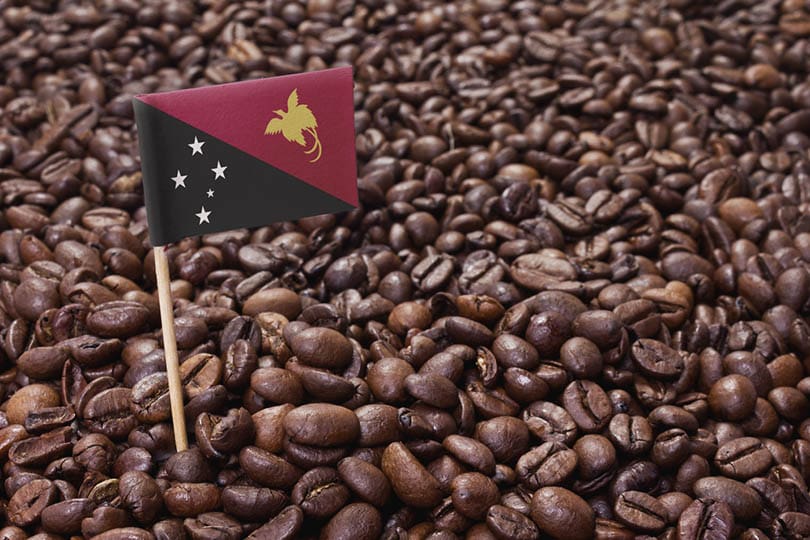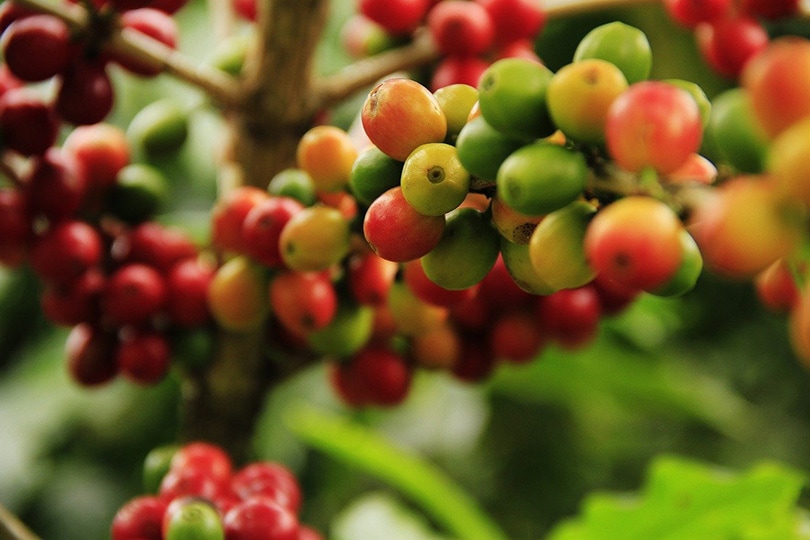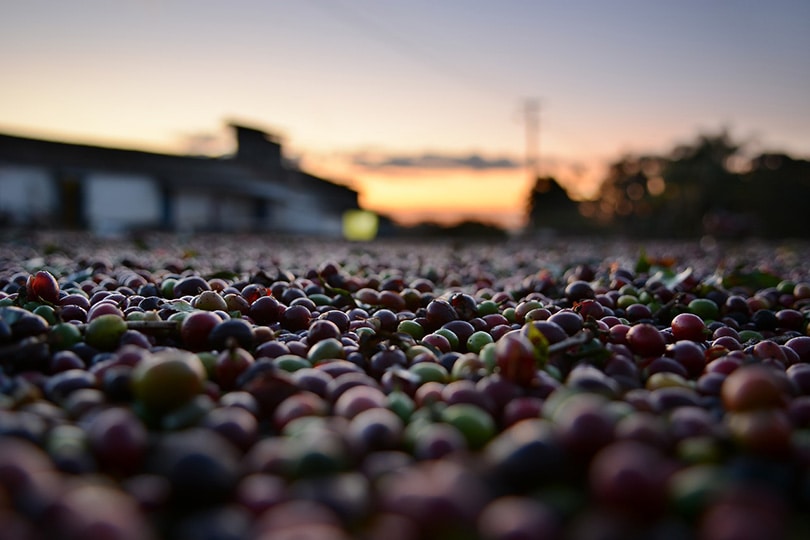
You have probably heard of Colombia, Brazil, and even Tanzania as coffee-producing countries. But how much do you know about Papua New Guinea, a small island country between Indonesia and Australia? We’ll give you an overview of Papua New Guinea coffee, including how the beans are grown, the history, and the best ways to brew these delicious beans. Let’s get started!

Papua New Guinea Coffee: An Overview
Coffee Bean Type
When coffee first officially arrived in Papua New Guinea, beans from Jamaican Blue Mountain coffee plants were planted. Blue Mountain coffee beans are arabica coffee beans, which are the most popular type of bean globally. Arabica beans are known for their delicate flavors and natural sweetness, but they can be more challenging to grow.
Around 95% of coffee from PNG is of the arabica variety, with the bitter and cheaper Robusta bean making up the rest. If you’re buying Papua New Guinea coffee, it’s almost always going to be arabica since Robusta beans are usually used for instant coffee.
Growing and Harvesting
Unlike other coffee countries that have massive plantations or mountainous farmlands, most of the coffee from Papua New Guinea is small-lot, selectively grown coffee. Local farmers plant sometimes as little as 10-20 coffee plants, which is minute in comparison to Brazil’s massive coffee plots.
After the coffee beans are ready for harvest, they are handpicked and wash-processed to separate the beans. Between the wet processing and the location, PNG coffee has a unique flavor profile that intrigues premium coffee drinkers. The local farmers take pride in their small batches of coffee, which is noticeable in the high-quality coffee beans they produce.

Flavor Profile
Papua New Guinea coffee has a distinct flavor profile, mostly due to the nutrient-dense soil. The flavor has a bright and citrusy bite, with floral notes and chocolate undertones to smooth it out. Coffee in surrounding regions has a deeper, more earthy taste, so the coffee from Papua New Guinea is a refreshing change. Farmers use the washing method to separate the beans from the coffee cherries, which also influences the result.

About Coffee and Papua New Guinea
Coffee is an important part of many countries and cultures, but this is especially true in places that have the right conditions to grow it. One such place is Papua New Guinea, which is the 17th biggest producer of coffee globally. Coffee and Papua New Guinea have had some serious ups and downs, leading to their rank on the charts of the biggest coffee producers.

History
The arrival of coffee to Papua New Guinea is somewhat unclear since multiple sources claim different responsible parties and dates. The most widely known claim is that German settlers brought it over during the colonization of PNG, sometime around the late 19th century. However, there is no official record that this is where it came from. Another claim states that British settlers brought it over around the same time, according to the Coffee Research Institute. But, as with the first claim, there is little evidence to prove this claim.
Regardless of the origins of coffee in Papua New Guinea, the first official documented production of coffee wasn’t until the 1920s. A handful of coffee farms and plantations were created in Sangara, a settlement in the southeastern part of PNG. By 1928, coffee farming had become fully commercialized. In the 1960s and 1970s, production would rise for PNG when multiple top-producing countries struggled during a particularly rough harvest.
In the 1990s, coffee production in Papua New Guinea reached a new height and was nearly half of the total revenue of exported agricultural goods. However, production has since been declining for multiple reasons, including the cost and price of coffee. Even though the interest in artisan coffee has increased drastically over the past decade, its overall production is half of what it was in the 1990s.

Current Yearly Production
Papua New Guinea holds the 17th rank of top coffee-producing countries in the world. Since 2019, the total annual haul for coffee was around 110,000,000 pounds or 800,000 60-kg bags of coffee. Their production comes from small farm lots after the decline of commercializing coffee production, which is why their total annual yield is so low. The decline started when coffee costs decreased globally, making it difficult to affordably grow large volumes of coffee. To this day, most of PNG’s coffee farming is a small-scale process and helps support the local farmers.
While their yearly production may still seem high, it’s only a fraction of what Brazil, Vietnam, and Colombia can produce. Papua New Guinea’s entire annual total is less than 2% of Brazil’s total, which hit over 5 billion pounds in 2019. Thankfully, with artisan coffee picking up, there’s a possibility that Papua New Guinea’s total production could rise again.

Best Ways to Brew Papua New Guinea Coffee
- Pour-Over – The pour-over method of brewing seems to be the best fit for the citrusy flavors of PNG coffee. This method will brighten the acidity of medium-roast PNG coffee without muting the lighter floral notes.
- Cold Brew – Cold brewing is a great way to enjoy PNG coffee. It won’t have the acidity of pour-over or drip-brew, but it will bring out the deeper chocolate notes. We recommend a dark roast PNG coffee bean blend.
- Drip-Brew – A classic drip-brew coffee maker will also do the trick, being a good median between acidity and bolder flavor. Although it’s not the best method, it will certainly still taste exquisite. A medium roast is the best roast for a drip-brew coffee maker.
More bean geography guides like this: Dominican Republic Coffee: Flavors, History, and Brewing Tips
Featured Image Credit: Per Bengtsson, Shutterstock















